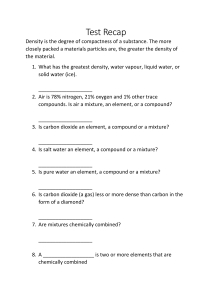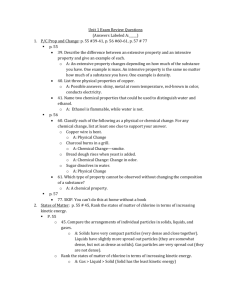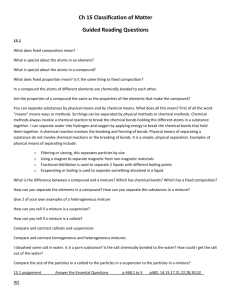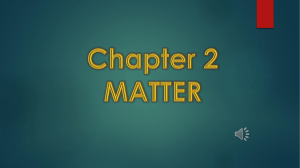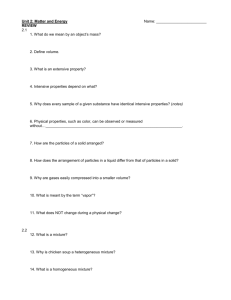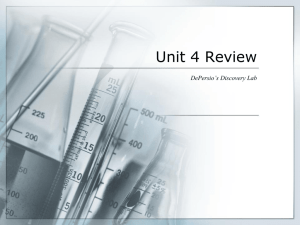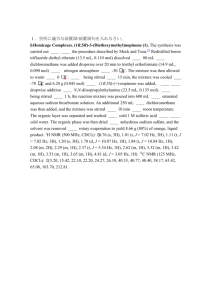Chapter 3: Guiding Comprehension Questions Lesson 1 1. Using
advertisement
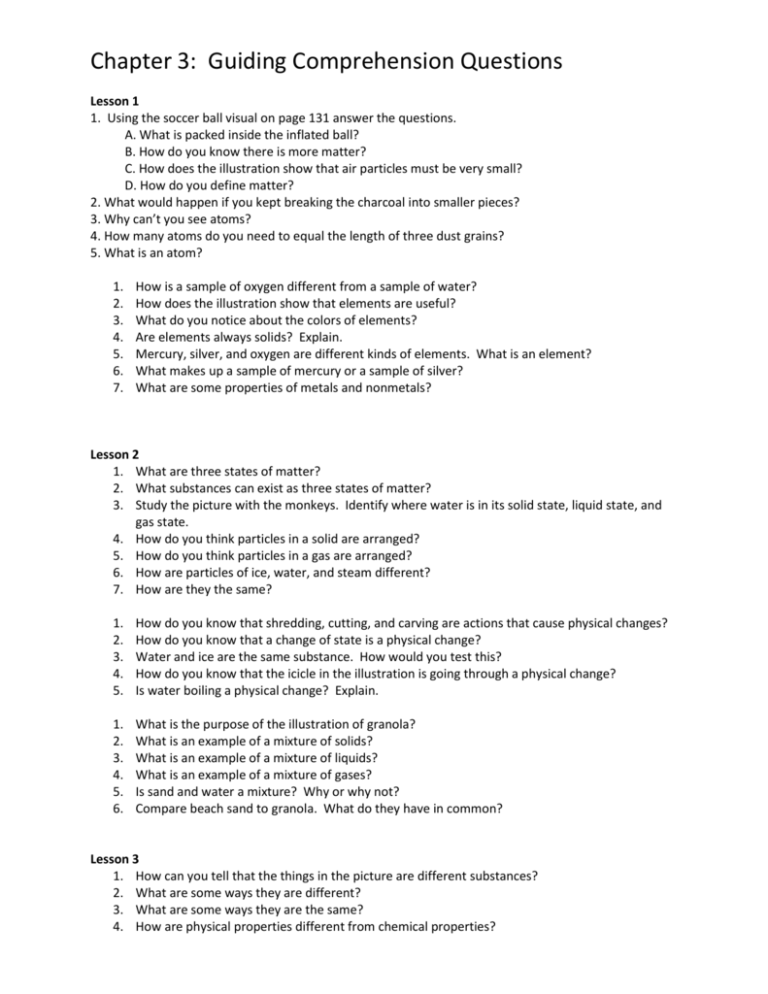
Chapter 3: Guiding Comprehension Questions Lesson 1 1. Using the soccer ball visual on page 131 answer the questions. A. What is packed inside the inflated ball? B. How do you know there is more matter? C. How does the illustration show that air particles must be very small? D. How do you define matter? 2. What would happen if you kept breaking the charcoal into smaller pieces? 3. Why can’t you see atoms? 4. How many atoms do you need to equal the length of three dust grains? 5. What is an atom? 1. 2. 3. 4. 5. 6. 7. How is a sample of oxygen different from a sample of water? How does the illustration show that elements are useful? What do you notice about the colors of elements? Are elements always solids? Explain. Mercury, silver, and oxygen are different kinds of elements. What is an element? What makes up a sample of mercury or a sample of silver? What are some properties of metals and nonmetals? Lesson 2 1. What are three states of matter? 2. What substances can exist as three states of matter? 3. Study the picture with the monkeys. Identify where water is in its solid state, liquid state, and gas state. 4. How do you think particles in a solid are arranged? 5. How do you think particles in a gas are arranged? 6. How are particles of ice, water, and steam different? 7. How are they the same? 1. 2. 3. 4. 5. How do you know that shredding, cutting, and carving are actions that cause physical changes? How do you know that a change of state is a physical change? Water and ice are the same substance. How would you test this? How do you know that the icicle in the illustration is going through a physical change? Is water boiling a physical change? Explain. 1. 2. 3. 4. 5. 6. What is the purpose of the illustration of granola? What is an example of a mixture of solids? What is an example of a mixture of liquids? What is an example of a mixture of gases? Is sand and water a mixture? Why or why not? Compare beach sand to granola. What do they have in common? Lesson 3 1. How can you tell that the things in the picture are different substances? 2. What are some ways they are different? 3. What are some ways they are the same? 4. How are physical properties different from chemical properties? 1. What does the word compound mean to you? 2. How do these meanings of compound relate to the scientific meaning of a compound as something made up of two or more different elements? 3. What do chemical reactions have to do with compounds? 4. If you put a burning piece of cloth in a jar and seal it tightly with a lid, eventually the cloth stops burning. Why? 5. How is a chemical change different from a physical change? 1. 2. 3. 4. 5. 6. How does bread baking fit at least three of the five clues for recognizing chemical changes? Would the mass of a penny and vinegar be different after a chemical reaction? What does the word conservation mean? Conservation of Mass is also called Conservation of Matter. Explain why. What happens to the mass of the glowstick when it lights? How does the mass of an apple compare to the mass of the same apple sliced into pieces.
